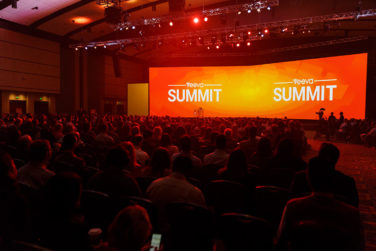Diving headfirst into a direct-to-consumer (DTC) campaign can be an exciting new challenge, but in a highly regulated industry such as pharma, these campaigns can sometimes disguise themselves as tricky, predetermined paths that no one wants to put their hands on.
The thing is, they don’t have to be. If you assemble the right team at the table from the start, a consumer campaign can push creative boundaries while still remaining compliant and checking the necessary boxes. The secret to accomplishing that? Having creatives and medical strategists working together throughout the process.
To explain how to fully embrace this uncommon collaboration, three creatives and a medical strategist from Fingerpaint, a full-service health and wellness marketing agency, take turns addressing the most pressing questions that any marketing team must answer to ensure this kind of collaboration works in their favor.
When developing a DTC campaign, why is it important for the creative and medical teams to be aligned?
We believe the best consumer campaigns are born out of collaboration. From a creative perspective, partnership with a medical team is so important. People who are living with life-changing or even life-threatening conditions often feel completely overwhelmed, and we have an important opportunity to help them.
While creatives think about things like health literacy and authenticity, it is also important to work with a science team to be certain that communication is appropriate from a medical standpoint. The way to make this happen is by having an open dialogue from the start with patient engagement, science, and creative teams.
That way creatives can look for a genuine insight into the patient mind-set and the best way to tap into that creatively. The science team can help craft the right story to help patients navigate the health challenges they face. And the patient engagement team helps ensure that everything that is said helps patients have the knowledge, tools, and support they need.
–Tracy Blackwell, Creative and a member of the leadership team in Fingerpaint’s Cedar Knolls office
At what point during a campaign does the creative team bring in the medical strategist team?
This is simple: As soon as possible. As Tracy mentioned, the best campaigns are born out of collaboration. When creative and medical work together from the start, you always discover great ways to support the brand goals in our industry’s tightly regulated space. I know our medical team really understands how to balance the promotional needs with the medical realities so we can quickly get to big, compelling ideas that pass the red face test.
–Andy Spitzer, Head of Creative in Fingerpaint’s Saratoga Springs office
How does having a medical strategist on the creative team from the beginning help with PRC reviews?
As Andy mentioned, when the medical strategy and creative teams work together from the start on developing content for a client, it is easier to craft campaigns that not only resonate with the consumers, but also are approved by a client’s PRC team. It’s always essential that accurate information is presented because you never want to mislead or overpromise.
Sometimes, an agency will develop an amazing campaign, but once it gets to the client’s PRC review team, it’s stalled with questions, comments, and critiques. Involving a medical strategist at the start of content development can help expedite PRC reviews and find the sweet spot between compelling content and accuracy.
Creative teams can lean on medical strategists to not just develop medical and scientific backgrounders for the team, but also to take a deep dive into the condition, patient profile/journey, and healthcare providers involved.
As a medical strategist, I can say we really strive to not stand in front of the team and cite a long list of facts and figures, but rather to customize the data to them and only present what’s needed in a compelling way. Most importantly, we don’t want to bore or hamper our creative teams—we want to help ignite their genius. By piecing out what’s different and compelling about a client’s product, the creative team starts to formulate areas to highlight in campaigns.
Being at the side of our creative team throughout the journey serves as somewhat of a pre-PRC review, as we pressure test the creative from the start to ensure we are delivering 100% compliant materials to the client.
–Hilary Armstrong, Medical Strategist in Fingerpaint’s Saratoga Springs office
How do you balance developing a creative DTC campaign while also staying compliant?
In the DTC world, there’s a misconception that compliant can’t be creative and, conversely, that creative can’t be compliant. I don’t subscribe to that belief. Why? The last thing creatives want to do is create something that just blends in with all of the other campaigns out there. Creating another campaign with a bunch of shiny, happy people would be a disservice to clients. It won’t help them stand out in an increasingly crowded marketplace and be embraced by patients who may benefit from their treatments.
But, we also don’t want our clients to get a letter. So, we push. We pull. We use the facts to inspire us. We look for unique ways of saying and depicting things while working closely with internal medical strategy teams and clients’ med legal teams to ensure compliance. It’s this collaboration that truly allows creative ideas to find a way into the world and not just remain all sad and lonely on a wall in war room. Essentially, compliant creative comes from collaboration.
–Joey Crawford, Creative Copy in Fingerpaint’s Conshohocken office









